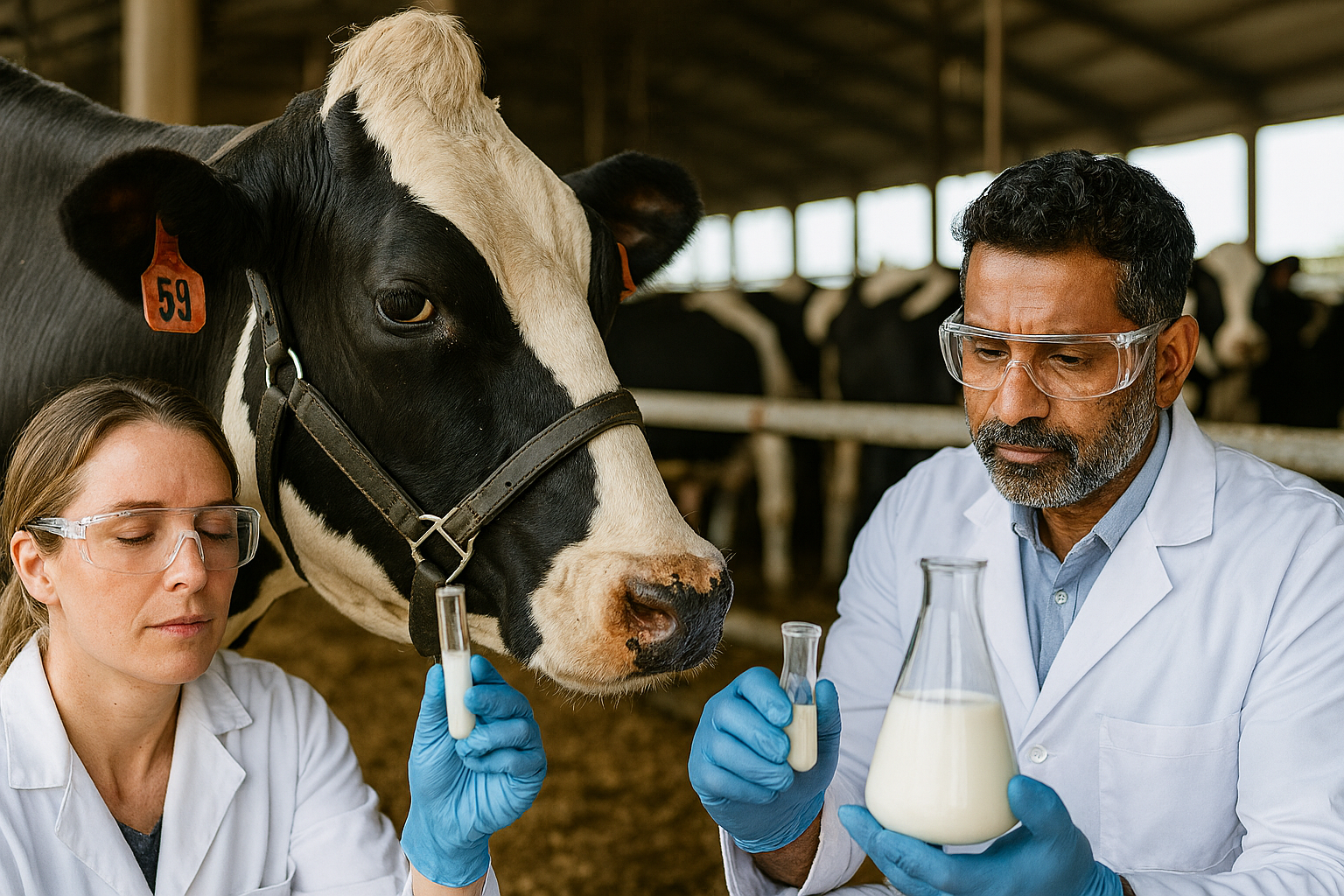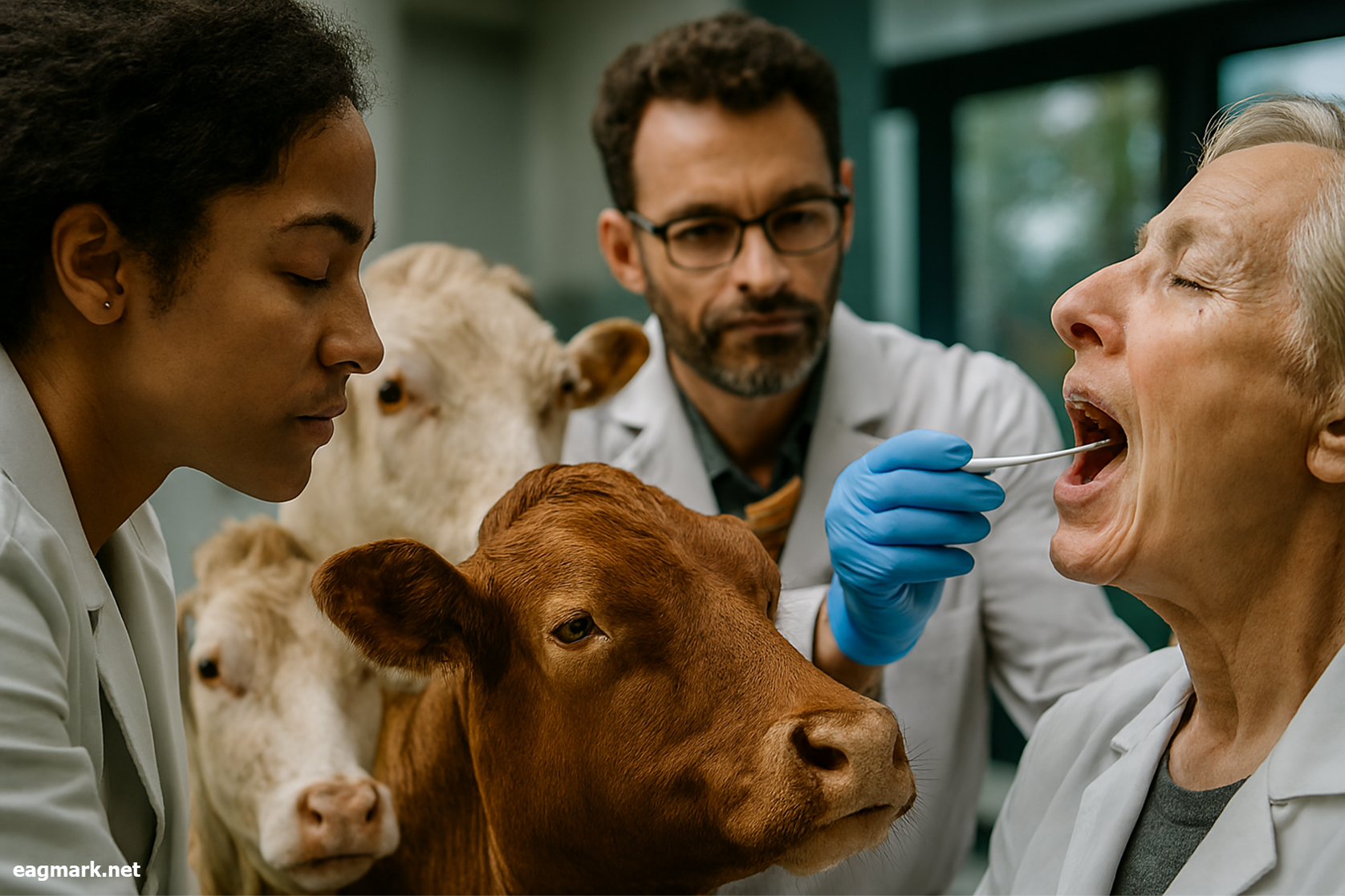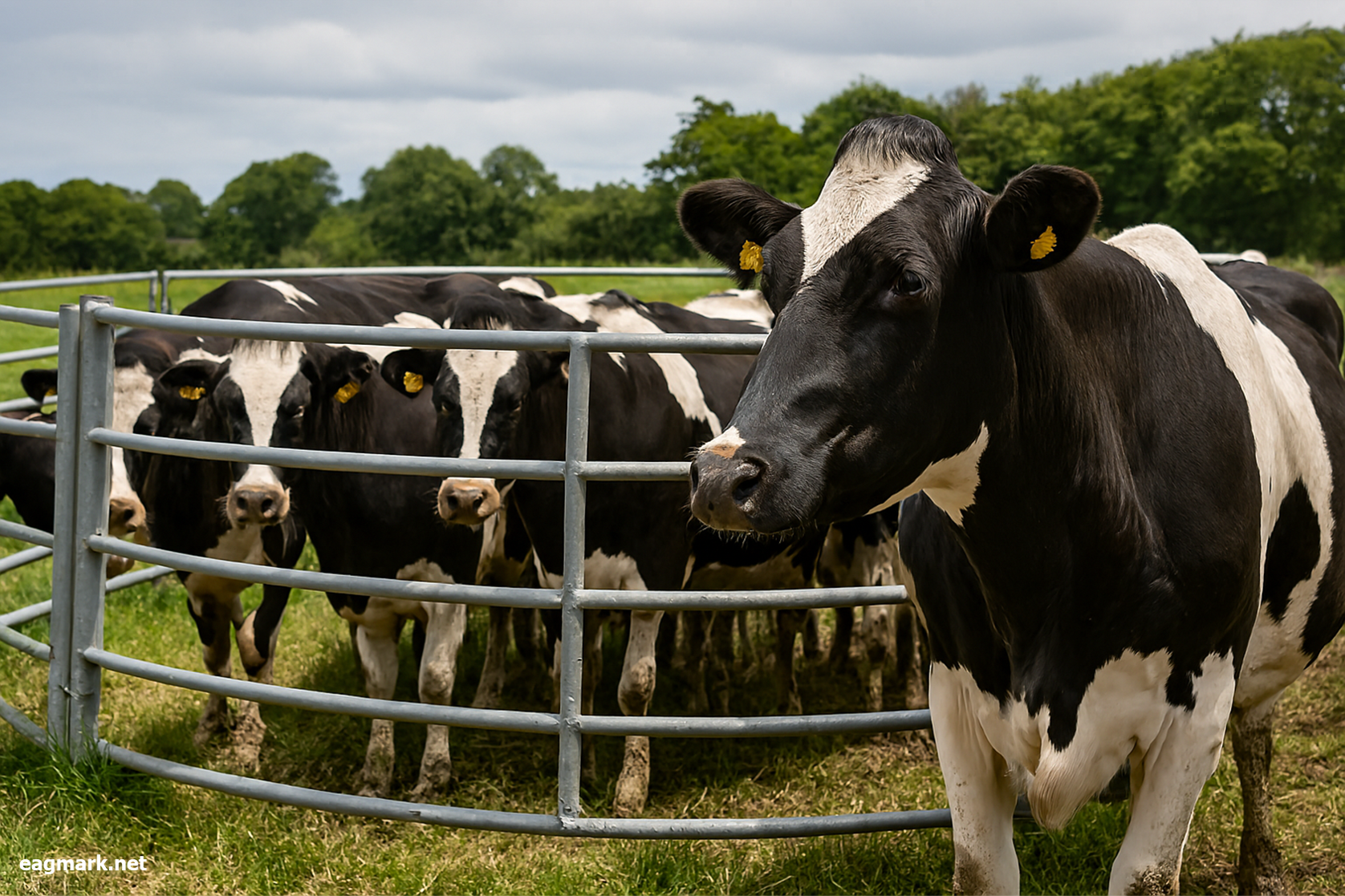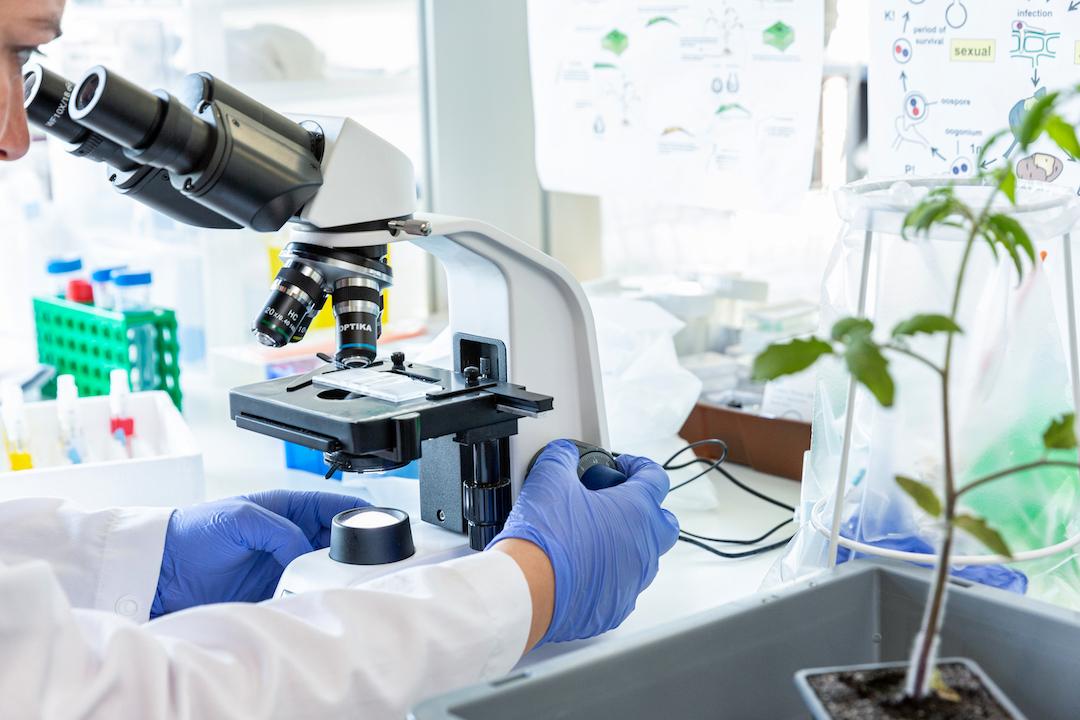
A research team from the University of Illinois Urbana-Champaign and Brazil's Universidade de São Paulo created a cow that makes human insulin in her milk. The work, published in Biotechnology Journal in March 2024, represents a decade of effort.
The cow lives in Brazil. She's the only one of her kind.
How They Did It
The researchers inserted human DNA sequences for proinsulin into cow embryos. They started with 10 embryos. Only one resulted in a live birth.
The calf grew into an adult cow. When researchers induced lactation using hormones, her milk contained human insulin and proinsulin. Lab analysis confirmed both proteins were present at concentrations of a few grams per liter.
The milk itself converted some proinsulin to insulin naturally. Enzymes present in mammary tissue did the work without additional processing.
Production Potential
Matt Wheeler leads the research team at Illinois. He ran the numbers on what this could mean at scale.
A standard dairy cow produces 40 to 50 liters of milk daily. If a transgenic cow generated just one gram of insulin per liter, that's 40 to 50 grams per day. Since one unit of insulin equals 0.0347 milligrams, a single cow could theoretically produce over one million units daily.
For context, a Type 1 diabetic might use 40 to 50 units per day.
The World Health Organization estimates 150 to 200 million people need insulin globally. Roughly half don't get it. Supply problems stem from cost and distribution barriers, particularly in low and middle-income countries.
The Reality Check
One cow exists. That's the current scale.
The researchers tried to breed her naturally. The pregnancy didn't take. This likely relates to the cloning technique used to create her, not the genetic modification. The team had to use hormones to trigger milk production for testing.
Cost remains an open question. Current insulin production relies on bacteria and yeast grown in bioreactors. These systems are established and efficient. Whether cow-based production would be cheaper depends on factors not yet calculated: herd management, extraction processes, purification methods, and regulatory compliance costs.
Dr. Wheeler's team hasn't published those economics. Neither has anyone else, because the technology isn't there yet.
Regulatory Path
The U.S. Food and Drug Administration would need to approve this insulin before it reaches patients in America. The European Medicines Agency would handle European markets. Brazil's Anvisa would evaluate it for South American use.
Each agency requires extensive safety data. Years of testing lie ahead. The researchers must prove the insulin works identically to current products. They must show it causes no unexpected immune responses. They must demonstrate consistent quality across production batches.
None of this testing has started.
What Came Before
Scientists first produced human insulin using genetically modified bacteria in 1978. Eli Lilly brought it to market as Humulin in 1982. That breakthrough ended reliance on pig and cow pancreases for insulin extraction.
Today's insulin comes from either E. coli bacteria or Saccharomyces cerevisiae yeast. Both organisms are modified to express human insulin genes. Pharmaceutical companies grow them in massive fermentation tanks.
Other mammals have been engineered to produce therapeutic proteins in milk. Goats produce antithrombin, a blood-clotting protein, through this method. The FDA approved that product in 2009. Rabbits have been modified to produce human C1 esterase inhibitor for treating hereditary angioedema.
The cow insulin project builds on these precedents but targets a much larger patient population.
The Diabetes Crisis
Diabetes prevalence keeps climbing. The International Diabetes Federation counted 537 million adults with diabetes in 2021. Their projections show 783 million by 2045.
Not all diabetics need insulin. Type 2 diabetes, which accounts for about 90 percent of cases, often responds to other medications and lifestyle changes. But Type 1 diabetics require insulin from diagnosis onward. Many Type 2 patients eventually need it as their condition progresses.
Insulin prices vary wildly by country. Americans with diabetes sometimes pay hundreds of dollars monthly even with insurance. The same insulin costs a fraction of that in countries with price controls or generic competition.
Three companies control most global insulin supply: Novo Nordisk, Eli Lilly, and Sanofi. This concentration gives them significant pricing power in markets without regulation.
What Happens Next
The Illinois and São Paulo teams plan to create more transgenic cattle. They need a proper herd to evaluate consistency and optimize production.
They also need to solve the breeding problem. If these cows can't reproduce naturally, each animal requires expensive cloning and genetic modification. That kills the economic case.
Extraction and purification methods need development. Milk contains hundreds of proteins, fats, and sugars. Isolating insulin at pharmaceutical purity levels requires sophisticated processing.
Public acceptance represents another variable. Some consumers reject genetic modification in food production. Medical applications face less resistance, but concerns remain about animal welfare and unintended consequences.
Brazil's role in this research isn't accidental. The country has substantial cattle infrastructure and expertise. It also has millions of diabetic patients struggling with insulin access.
The Bigger Picture
This technology won't solve insulin access problems alone. Distribution networks, refrigeration requirements, and healthcare system capacity all matter as much as supply volume.
But production capacity sets the ceiling. If manufacturing can't keep pace with need, everything else becomes academic.
The single transgenic cow in Brazil proves the concept works. The next phase determines whether it works at scale, at acceptable cost, with reliable quality.
That phase just started.
Primary source: Wheeler, M.B., et al. "Expression of Human Insulin in the Milk of a Transgenic Cow." Biotechnology Journal (2024). DOI: 10.1002/biot.202300307


